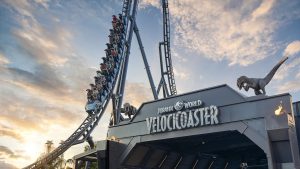With the advent of such next-generation theme park lands as The Wizarding World of Harry Potter and Pandora: The World of Avatar, themed areas are now an attraction in and of themselves – highly detailed, recreating one specific location from their source material, and fully immersive. Gone are the days when restaurants, gift shops, or, even, bathrooms could be “backstage”; now everything is expected to connect and flow and envelope the guest in another time or place (or both).
While wonderfully, magically effective, there’s also a growing problem with such an approach and how it ties back into the movie or book franchise that the section is based off (and this new wave of theme park lands is always based off of an intellectual property, as executives are unwilling to write a check for $500 million [or more] unless there’s some sort of previously-established interest in the project). That problem? Continuity with the source IP – and, in some cases, spoilers for how the originating stories will end.
Although only a slight wrinkle now, it could grow into a full-fledged dilemma as the theme park operators continue to try and outdo one another and as guests become ever-more-demanding in their immersion.
Harry Potter and the schizophrenic setting
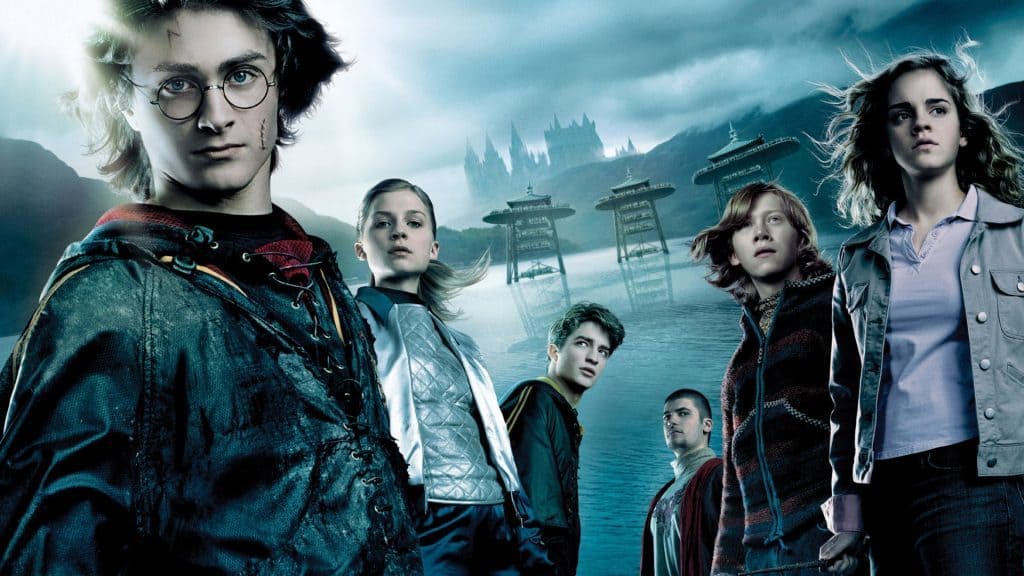
Let’s start at the beginning of this themed revolution. The Wizarding World of Harry Potter – Hogsmeade got the ball rolling by apparently choosing the fourth film/novel in its corresponding series, Harry Potter and the Goblet of Fire, as its time setting – the Triwizard Tournament is the basis for two of its attractions (Dragon Challenge and the Triwizard Spirit Rally), another seems to reference it (Hagrid and his lost dragon in Harry Potter and the Forbidden Journey), and the Sirius Black wanted poster seen outside The Three Broomsticks fits the time period perfectly.
Selecting such a specific setting isn’t at all unexpected; after all, a number of the films’ actors make an appearance (or two), and how they look, including their ages, is absolutely tied to a specific moment in time (never mind that Hogsmeade opened five years after Goblet of Fire came out and just one year before the eighth and final movie). And to justify such an approach, Universal decreed that this particular day that the Wizarding World is set in would be forever frozen in time, thereby making the narrative needs conjoin with the practical.
The continuity snag arrives with Forbidden Journey’s higgedly-piggedly story. While it (mostly, kinda) fits that random events or characters from the first four films are all jumbled together in a greatest-hits checklist, the fact that the ride’s loading platform is set within the Room of Requirement, which isn’t discovered by Harry and the gang until the fifth movie, muddies the storytelling waters. And things only get exponentially worse when Diagon Alley enters the picture, with a land that is generally set within the sixth installment (Harry Potter and the Half-Blood Prince) but doesn’t reference the ongoing narrative of that point (y’know, the just-erupted Second Wizarding War against Lord Voldemort, which transforms Diagon Alley into a rather different place). And this isn’t to mention the fact that it has an attraction – and building – in the form of Harry Potter and the Escape from Gringotts that takes place during the eighth movie (Harry Potter and the Death Hallows, Part 2), further compounding the matter. In this way, traveling on the Hogwarts Express apparently means taking a trip across space and time.
What does such admitted nitpicking ultimately matter? To fans of the franchise, potentially quite a bit – if Universal wants visitors to wear the Wizarding World’s deluxe robes and use its interactive wands and consume all of its myriad exclusive food and drink, that means immersion is the central selling point of the whole enterprise, and that means a minimum on contradictions of any kind, narrative or otherwise.
Pandora: the world of spoilers
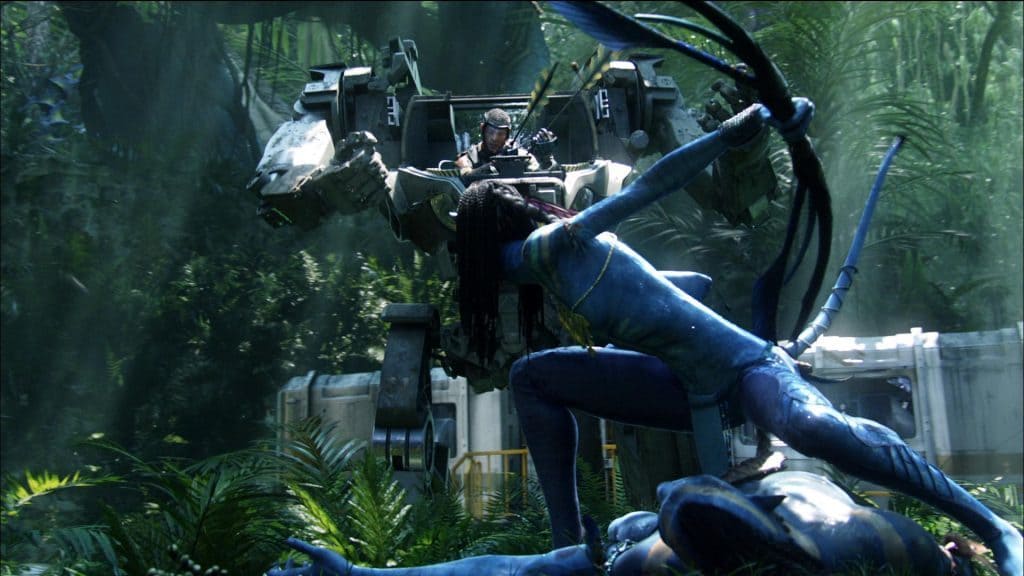
Pandora: The World of Avatar directly follows the Wizarding World’s lead, opting to recreate the highly specific Valley of Mo’ara on the alien moon of Pandora and to set itself at a certain – though still mostly vague – point after the end of the Avatar film franchise (that would be a full generation later, for all those following along at home).
The problem here is that, of course, of that five-movie series, only the first has been released; Avatars 2 through 5 won’t even arrive until 2018 through 2025, by which point the theme park land will have already been open for a whopping nine years. That’s a long time for visitors to The World of Avatar to allow its setting to set in, thoroughly coloring the experience that they will then have when walking into the theater (again and again) to see how writer-director James Cameron will connect the present of the movies to the future at Disney’s Animal Kingdom.
All right, yes, a few caveats need to be mentioned here. Firstly, the references Pandora makes to Avatar 5’s finale – in which, presumably, we’ll get to see the war between humanity and the Na’vi come to a peaceful close, with the blue aliens (mostly) kicking those pesky invaders off of their verdant moon – are uniformly vague; we only get a recap of the joint Terran-Na’vi effort to repair the ecological damage the war has done to Pandora rather than, say, a mention of what main characters Jake Sully and Neytiri are currently up to (if they’re even still alive, that is). Secondly, it should come as no real surprise to anyone that Cameron would choose to end his extended movie franchise with those dastardly, moustache-twirling humans losing the day, raising the question: are these even spoilers? And, finally, the fact that Avatar Land was opened so far ahead of the sequels means that Disney’s Imagineers as well as Cameron’s Lightstorm Entertainment are able to weave in several pieces of foreshadowing to their future plots (which all parties have routinely said they most certainly did), making this the most unique instance of multimedia storytelling to date in human history.
Still, the potential narrative drawbacks – and the potential influences such a stance will have over future theme park developments – must be considered as designers continue to move into the future of such all-encompassing lands.
Whither the future?
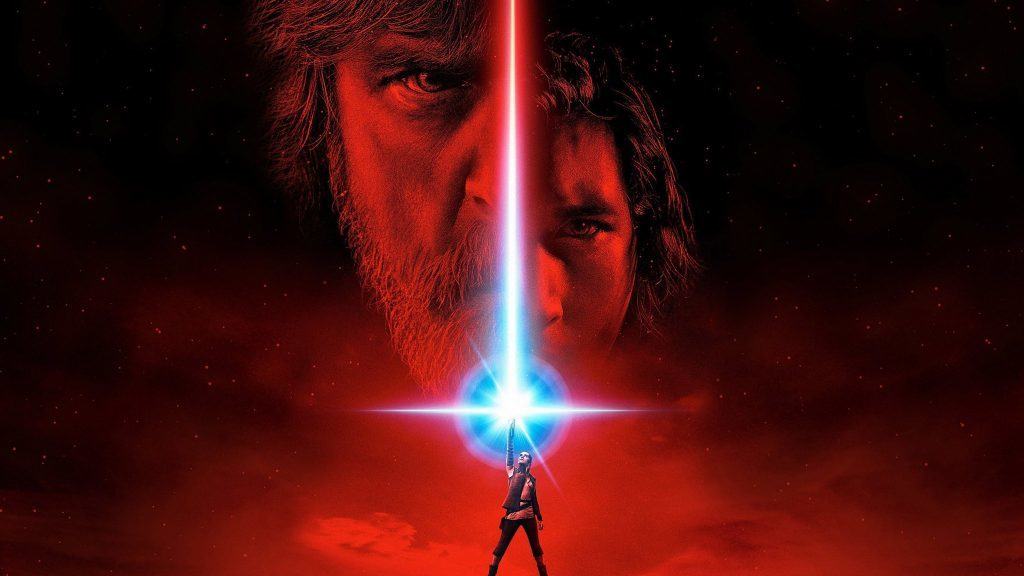
Star Wars Land, which is due to open at Disney’s Hollywood Studios sometime in 2019, looks to pick up the theming gauntlet – it is currently believed that users will be able to select either the light or dark of the Force, which will then color the way in which the land’s inhabitants will interact with them – but will mostly stay the course that Harry Potter and Avatar charted. Disney has already dropped some hints that one (or both) of the area’s rides will reference the events of the new sequels, with the timing of its opening most likely landing just months after the final installment, Star Wars: Episode IX, hits theaters; this means that it’ll more specifically take the Wizarding World’s “moment frozen in time” approach, a fact which the presence of the new trilogy’s baddies, the First Order, all throughout Star Wars Land seems to only reinforce. This, in turn, means that all the benefits and drawbacks of Hogsmeade and Diagon Alley will be fully on display here, as well – and as the current cast moves on to new projects or, sadly, passes away (like Carrie Fisher did at the end of last year), Disney may very well face the same prospect that Universal currently does of turning to side characters for future attractions or expansions.
Marvel Land, which will arrive at Disney California Adventure sometime next decade, after Star Wars Land finishes construction at the next-door Disneyland, has an even more daunting task ahead of it – some six decades of source material in terms of the originating comic books themselves, plus all the additional years’ worth of television and film adaptations (not the least of which is the mega-successful Marvel Cinematic Universe, which will be releasing its 16th movie next month – and has additional installments announced all the way through the end of 2020). Do the Imagineers attempt to translate classic comic stories using the faces of the films? Will they be shoehorned in the MCU’s continuity specifically – and, if so, will they also reference the shared universe’s 11 television shows and five short films? Forget multiple settings of the same timeline – what we’re talking about here is entirely different universes to begin with (even just among the comics themselves). Attempting to keep this all straight from street to street, attraction to attraction will be an unprecedented attempt in the annals of theme park-dom.
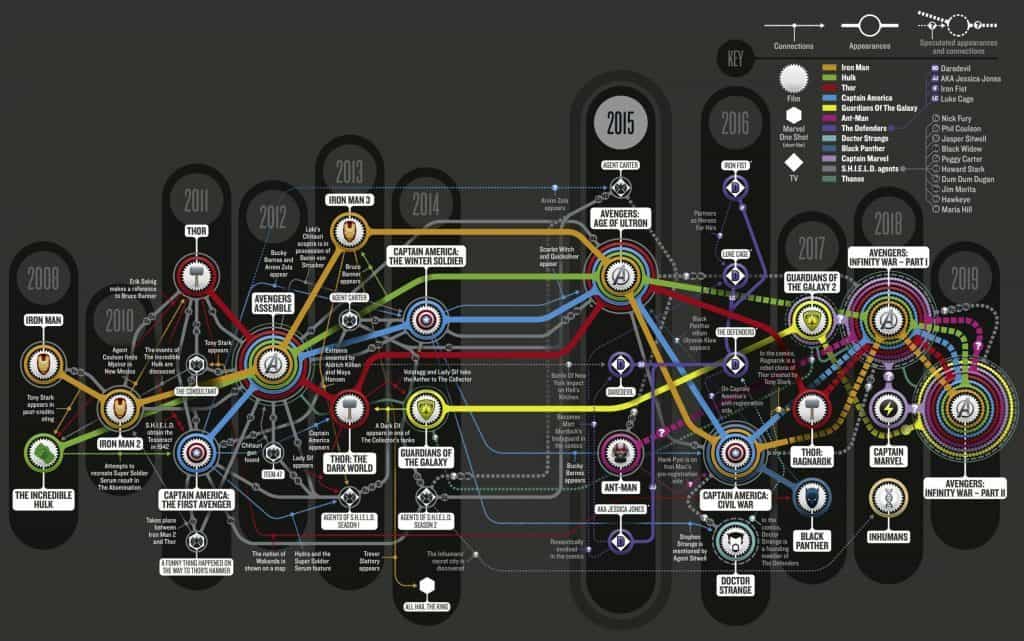
It is at this point that three basic (well, “basic”) solutions present themselves to both the designers and to fans, with each entailing entirely different potential ramifications. There is first the possibility of developing a fully immersive, fully-detailed theme park land that still labors to authentically recreate a specific geographic location but which drops all attempts at recreating a corresponding time period – if such a prospect is even possible. Number two is to have an overarching story gradually progress in real time; the Wizarding World could, say, feature attractions or stage shows that age alongside the child protagonists of the books, starting all over again once the seven-year journeys of Harry, Ron, and Hermione end and they leave Hogwarts behind.
The third and final option is to have these lands somewhat revert back to their original, inchoate forms, like they existed in from Disneyland’s opening in 1955 to Hogsmeade’s arrival in 2010. The catch here would be to switch out the theming catch-all for a temporal one – instead of Fantasyland being a hodgepodge collection of various attractions from various properties only loosely stitched together, we could see Star Wars Land, for instance, feature one otherwise-unified Tatooine that has each of its six streets being set during each of the first six Star Wars installments.
Whichever tack the themed operators opt to take, one thing seems certain: we now, after 62 long years, have entered narrative immersion with our theme parks. It’ll be very interesting to see what we do with it now that we’re here.
–
For all the latest updates on The Wizarding World of Harry Potter, Pandora: The World of Avatar, and Star Wars Land, be sure to follow Orlando Informer on Facebook, Twitter, and Instagram.
